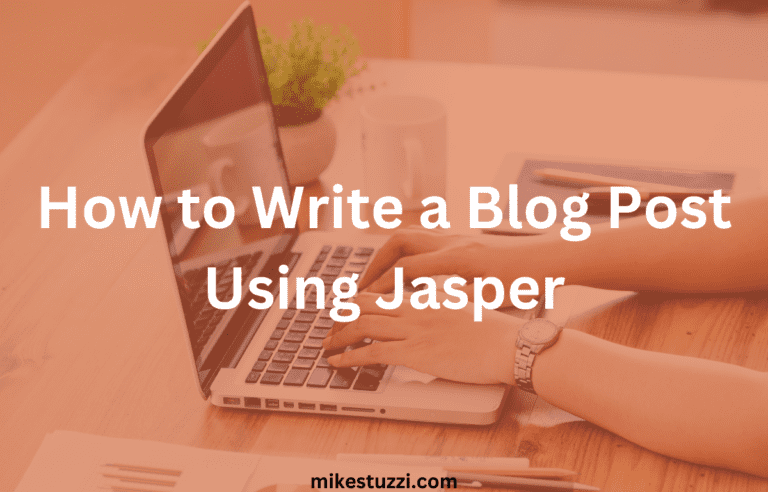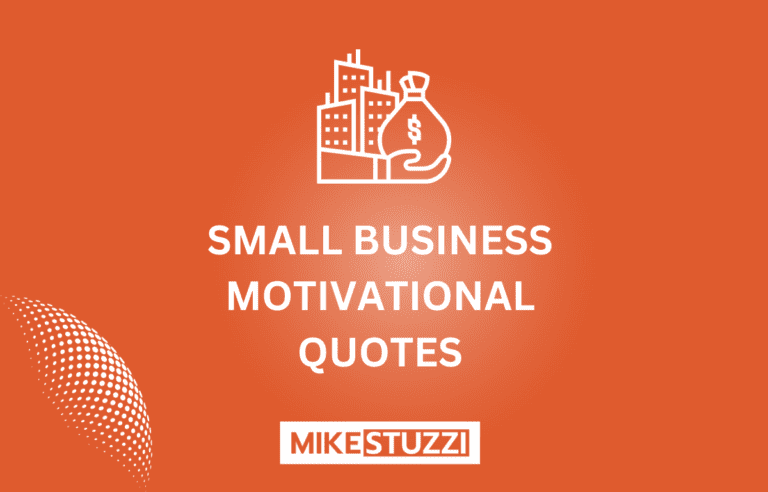The Ultimate Guide to Email Copywriting
Email is one of the most powerful tools in a marketer’s toolkit. With its ability to reach a targeted audience and deliver personalized messages, it’s no wonder that email marketing continues to be a top strategy for businesses of all sizes. But with so many emails flooding inboxes every day, how can you ensure that your message stands out?
The answer lies in effective email copywriting. In this article, we’ll explore the art of crafting compelling emails that engage your audience and drive results. From subject lines to calls-to-action, we’ll cover the essential elements of email copywriting and share tips for creating messages that resonate with your readers.
Read also: Best Email List Cleaners
What Is Email Copywriting?
Email copywriting refers to the art of crafting persuasive and effective messages that are sent through email to a specific audience. It involves using the right words and structure to convey a message that engages the reader and inspires them to take action, such as making a purchase, signing up for a newsletter, or attending an event.
Effective email copywriting involves understanding the target audience, creating compelling subject lines and headlines, crafting a clear and concise message, and including a call-to-action that prompts the reader to take the desired action. Overall, email copywriting plays a critical role in email marketing campaigns, helping businesses build relationships with their email subscribers and drive conversions.
Elements of Email Copywriting
Below are the aspects of writing a good email copy.
1. Understanding Your Audience
Even before crafting your email, understanding your audience is a must. This is crucial to writing effective email copy that resonates with your readers and drives engagement. Without a clear understanding of your audience, your message may fall flat or fail to achieve its intended goals.
To better understand your audience, you should consider factors such as their age, gender, location, interests, and pain points. You can use data from your email marketing platform or social media analytics to gather insights about your audience. You can also create buyer personas, which are fictional representations of your ideal customers, to help you understand their needs, motivations, and behaviors.
Once you have a clear understanding of your audience, you can tailor your email copy to their specific interests and preferences. This can involve using language and tone that resonates with them, highlighting the benefits of your product or service that are most relevant to their needs, and including content that aligns with their interests.
2. The Subject Line
The subject line is an important element of email copywriting. You know that feeling of excitement when you see an email that catches your attention? That’s the power of a great subject line. The subject line is the first thing your audience sees when they receive your email, and it can make or break their decision to open it.
To create an effective subject line, you want to be attention-grabbing, clear, and relevant to the content of your email. Think about what would make you want to open an email – maybe it’s a question, a sense of urgency, or a special offer. Whatever it is, make sure it aligns with the message of your email.
Avoid using clickbait or misleading subject lines, as these can damage your credibility and result in lower open rates. Instead, focus on creating subject lines that accurately reflect the value of your message and entice people to take action.
Remember, your subject line is your chance to make a great first impression and convince your audience to open your email. So, take the time to craft a subject line that is attention-grabbing, relevant, and compelling, and watch your open rates soar.
Subject Line Examples
Putting the best practices into account, here are a few subject line examples that can work in almost any industry:
- Limited time offer: [insert promotion here]
- Your [industry] questions answered
- [Number] reasons to try [product/service]
- Don’t miss out: [insert event or sale here]
- New [product/service] alert!
- [Name of product/service] just got better
- How to [insert benefit here] with [product/service]
- [Number] tips for [desired outcome]
- Get [desired outcome] with [product/service]
- The secret to [insert benefit here]
These subject line examples are straightforward, clear, and relevant to a wide range of industries. They can be adapted to fit the specific needs and goals of your business, whether you are promoting a new product, hosting an event, or offering a limited-time discount.
3. Opening
The opening is a critical element of email copywriting, as it can make the difference between a reader who engages with your message and one who clicks away. After your audience has opened your email, the opening is your chance to hook them in and keep them reading. A strong opening should be attention-grabbing, engaging, and relevant to the message of your email.
One effective strategy for crafting a compelling opening is to focus on the reader’s pain points or interests. Start by identifying the problem or need that your product or service addresses, and use that as a hook to draw your reader in. For example, if you are promoting a weight loss program, you might start your email with a question like, “Are you tired of struggling with diets that don’t work?”
Another strategy is to use storytelling to create an emotional connection with your reader. Start with a relatable scenario or anecdote that captures the reader’s attention and sets the stage for the rest of your message. For example, if you are promoting a financial planning service, you might start your email with a story about a couple who struggled to save for retirement until they discovered your service.
Regardless of your approach, your opening should be clear and concise and should set the tone for the rest of your email. Keep in mind that your readers are likely busy and have short attention spans, so it’s important to get to the point quickly and make a strong impression from the start.
4. Email Body
Another crucial element of email copywriting is the body. The body of your email is where you deliver your message and provide value to your reader. It’s where you have the opportunity to connect with your audience, showcase your expertise, and persuade them to take action.
When writing the body of your email, it’s important to be clear and concise. Your message should be easy to understand and relevant to your reader’s needs and interests. Use language that is simple and conversational, and avoid industry jargon or technical terms that might be confusing to your reader.
One effective approach for writing the body of your email is to use a problem-solution format. Start by identifying the problem or need that your product or service addresses, and then provide a clear and compelling solution that addresses that need. Use examples and stories to illustrate your points, and make sure to highlight the benefits of your product or service.
Specific AI writing tools can even help you write the copy for your email body. You can use them to write more emails faster. Just be sure to add a human touch to it and edit out whatever isn’t needed.
5. Call to Action
The call to action (CTA) is one of the most important elements of email copywriting. This is because it’s the part where you ask your reader to take a specific action. There are a few best practices you can follow to create a compelling CTA.
First, you have to be specific and straightforward about the action you want the reader to take. Whether you’re asking them to make a purchase, sign up for a service, or schedule a consultation, make sure your CTA clearly communicates what happens when they click on it.
Secondly, using persuasive and urgent language works like magic. Encourage your reader to take action now by using phrases like “Act fast” or “Limited time offer.” When your CTA sounds urgent, people are more likely to take the offer because they know they may not get it again in the future.
The third thing is to make your CTA prominent and easy to find. Use capitalized, bold, or colored text to make your CTA stand out from the rest of your email content. You might also want to include your CTA multiple times throughout your email to make sure your reader sees it.
And, make it easy for your reader to take action by including a direct link to your offer or landing page. Ensure that the link is clearly labeled and easy to click. Test it to ensure it works correctly before sending the email.
6. Closing
While the call to action is typically the last thing your reader sees, the closing remarks can help to tie everything together and leave a positive impression. Closing remarks in an email is important for making your readers feel valued. It’s important to make your closing strong and memorable, as it can influence your reader’s decision to take action or engage with your brand in the future.
One effective way to end your email would be to express gratitude or appreciation. For instance, you can write something like, “Thank you for taking the time to read my email. I appreciate your interest in our product and look forward to hearing from you soon.”
Another approach is to use friendly language that includes a personal touch showing how you value your reader as an individual and not just a buyer. For example, you can say something such as, “I hope you have a great day and look forward to connecting with you again soon!”
It’s also essential to make sure that your closing remarks suit the tone and purpose of your email. If you’re sending a professional email, you’ll want to use a formal tone and include a polite closing such as “Sincerely” or “Best regards.” In case you’re sending a more casual email, you’re free to employ a more relaxed tone and include a closing that feels more personal, such as “Take care” or “Cheers.”
7. Email Signature
Your email signature is a tiny but important part of email copywriting. It helps to create a professional image of your brand and makes you more trustworthy. The signature should include basic information such as your name, job title, company name, and contact information.
Here are some tips for creating an effective email signature:
- Keep it simple: Your email signature should be easy to read and not overly cluttered with unnecessary details. Avoid including too much information or using fonts that are difficult to read.
- Include your contact information: Make sure that your email signature includes your phone number, email address, and any other relevant contact information.
- Use branding: It would be best if your company’s logo or brand colors appear in your email signature. This serves the purpose of reinforcing your brand identity.
- Include a call to action: You can also include a call to action in your email signature. It could be a link to your website or a specific landing page you want someone to visit.
- Make it mobile-friendly: With more people accessing email on their mobile devices, make sure your email signature is optimized for mobile screens and is readable on a small screen.
Email Copywriting FAQs
How do you write an email copy?
When it comes to writing an email copy, begin with a clear understanding of your target audience and your marketing goals. Here are some steps you can take to get started:
- Define your target audience: Who are you writing to? What are their needs and interests? What motivates them to take action? Answering these questions will help you to create email content that is relevant and engaging to your target audience.
- Clarify your marketing goals: What do you want to achieve with your email campaign? Are you trying to drive sales, generate leads, or build brand awareness? Having a clear understanding of your goals will help you to create email content that is focused and effective.
- Choose your email type: There are many different types of email campaigns, including newsletters, promotional emails, welcome emails, and more. Choose the type of email that is best suited to your marketing goals and target audience.
- Create a compelling subject line: The subject line is the first thing your reader will see, so it’s important to make it attention-grabbing and relevant to your email content, preferably using an email subject line generator.
- Write engaging email content: Your email content should be informative, relevant, and engaging to your target audience. Use a clear and concise writing style, and focus on the benefits of the product or service.
- Include a clear call to action: Your email should include a clear and specific call to action that encourages your reader to take action, such as making a purchase or signing up for a free trial.
How long should an email copy be?
The length of an email copy can vary depending on the type of email, the audience, and the purpose of the email. In general, it’s best to keep your email copy concise and focused on your main message or call to action.
For promotional or sales emails, the ideal length is typically around 50-125 words. This is long enough to convey your message and make a compelling offer, but short enough to hold the reader’s attention and avoid overwhelming them with information.
For newsletters or informational emails, the length can be slightly longer, up to around 200-300 words. However, it’s still important to keep your content focused and relevant to your audience.
As for longer emails, such as welcome emails or onboarding emails, break up the content into smaller sections. If possible, use bullet points to make it more readable and scannable for the reader.
Ultimately, the goal of email copywriting is to communicate your message effectively and drive action from your audience. Whether your email is short or long, the key is to keep your content focused and relevant. Make sure every word serves a purpose in achieving your marketing goals.
How do I become a freelance email copywriter?
To become a freelance email copywriter, here are some steps you can take:
- Build your writing skills: Improve how you write by reading and writing regularly. You can also take writing courses or workshops to improve your craft.
- Learn about email marketing: Learn the basics of email marketing, including how to create effective subject lines, calls to action, and email design. There are many online resources and courses available that can help you craft something close to perfect.
- Develop your portfolio: Showcase your best copywriting work online for potential clients to see. If you don’t have any experience yet, you can create mock email campaigns or offer to write emails for friends or family members.
- Set your rates: Determine how much to charge based on your experience and the complexity of the project. It’s important to communicate your value to clients and charge what you’re worth.
- Establish your brand: Create a website as well as social media pages to share your skills and expertise as an email copywriter. Use content marketing strategies to build your brand and attract some clients.
It takes time and effort to build a freelance business, but with persistence and hard work, you can achieve your goals and find success as an email copywriter.
Here’s more information on how to start a copywriting business.
How do email copywriters get clients?
Email copywriters can get clients through a variety of methods, including:
- Freelance marketplaces: Freelance marketplaces like Upwork, Freelancer, and Fiverr can be a great way to find clients who need email copywriting services. These platforms allow you to create a profile and bid on projects or receive invitations to apply for jobs that match your skills.
- Networking: Networking with other professionals in your industry or niche can help you to find clients through word-of-mouth referrals. Attend industry events, join online communities or social media groups, and participate in discussions to connect with potential clients and showcase your expertise.
- Cold pitching: Email copywriters can reach out to potential clients directly by sending cold emails or direct messages. Research companies or individuals who may need your services, and reach out with a personalized message that highlights your skills and experience.
- Content marketing: Creating content that showcases your expertise and provides value to your target audience can attract potential clients to your website or social media channels. Use content marketing strategies like blogging, social media marketing, and email newsletters to build your brand and attract clients.
- Job boards: Job boards like ProBlogger or Indeed can be a great way to find clients who are actively looking for email copywriters. Keep an eye out for job postings that match your skills and experience, and apply with a well-crafted pitch that highlights your expertise.
It’s important to focus on building relationships, providing value, and showcasing your skills and expertise to attract clients and build a strong reputation in the industry.
Conclusion
Effective email copywriting is a crucial element of any successful email marketing campaign. By incorporating the elements of a strong subject line, a compelling opening, a clear call-to-action, and a well-crafted signature, you can create emails that resonate with your audience and drive conversions.
Remember to focus on providing value, being concise, and using persuasive language and techniques to turn your audience into action-takers. With these tips and strategies, you can become a skilled email copywriter and create email campaigns that engage, inform, and inspire your readers.







